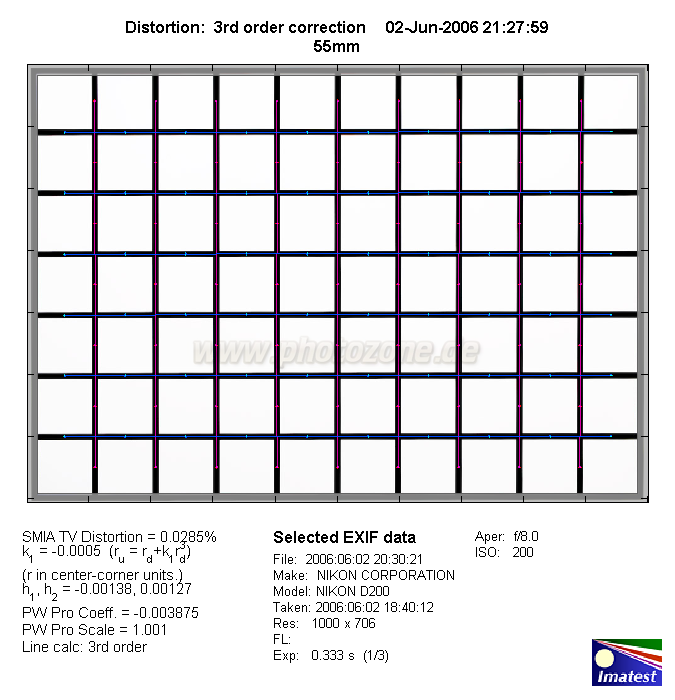|
Nikkor AF-S 55-200mm f/4-5.6 G ED DX - Review / Test Report - Analysis |
|
Lens Reviews -
Nikon / Nikkor (APS-C)
|
|
Page 2 of 3
Distortion
The AF-S 55-200mm DX provides distortion-free images at 55mm changing to rather pronounced
pincushion distortion at 100mm (1.7%) and 200mm (1.5%).
|
Move the mouse cursor over the focal length text marks below to observe the respective distortion
|
| 55mm |
100mm |
200mm |
|

|
The chart above has a real-world size of about 120x80cm.
Vignetting
As mentioned the AF-S 55-200mm DX is a reduced image circle lens (APS-C) and typical for
such lenses vignetting is more pronounced compared to classic full frame lenses.
At wide-open aperture vignetting is quite high at around 1EV so it is advisable to
stop down a little in critical situations.

MTF (resolution)
The Nikkor AF-S 55-200mm f/4-5.6 G ED DX showed a very good resolution characteristic
in the lab. At 55mm the results are even on an excellent level both in the center
as well as at the borders. The quality decreases slightly when zooming towards the
long end of the zoom range but remains quite impressive.
Nonetheless you may prefer to stop down a little at 200mm to improve the contrast
quality (not formally measurable via the Imatest procedure).
The lens showed a slightly uneven resolution distribution (centering defect).
Please note that the MTF results are not directly comparable across the different systems!
Below is a simplified summary of the formal findings. The chart shows line widths per picture height (LW/PH) which can be taken as a measure for sharpness.
If you want to know more about the MTF50 figures you may check out the corresponding Imatest Explanations
Chromatic Aberrations (CAs)
Lateral chromatic aberrations (color shadows at harsh contrast transitions) are very low
throughout the zoom range and not field relevant by most standards. The lens appears to
be free of purple fringing which is often a problem with legacy lenses.

|